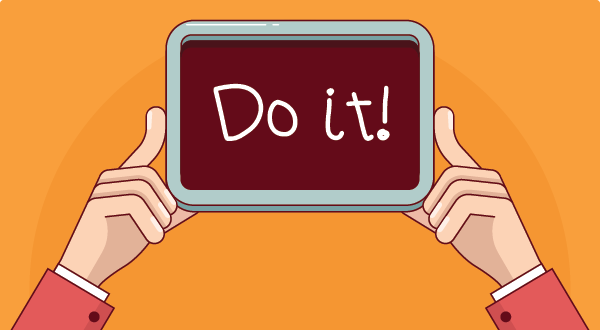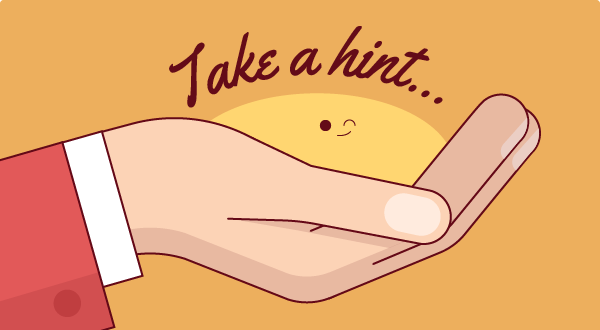The Startups Team

Intro to the Customer discovery process
Up to this point, we’ve made sure that there is a problem in the market for your business idea to solve through idea validation research and notable experts have verified that you’re on the right path. Now we begin the last test of the business idea validation process — customer discovery.
We’re using customer discovery as a methodical approach to ensuring the product idea you’ve identified aligns with what potential customers actually want at a price they are willing to pay.

Key Takeaway
Use idea validation to confirm that the problem, solution, and revenue model aligns with what potential customers really want.
Customer Discovery
Customer Discovery centers around 3 critical pillars of your business model — the Problem, Solution, and Revenue Model. Since you’ve identified that potential customers likely have a problem worth solving, now it’s time to see if your solution is the right fit and that early adopters would pay for what you’ll produce.
Customer Discovery will put those hypotheses to the test so you can refine your business idea and value proposition before you even build it. Idea validation can't guarantee success, but it can help you avoid common pitfalls or certain failure.

The Customer Discovery Method consists of 4 steps:
ONE Create Customer Archetypes
There are typically a number of customer profiles that need to be created representing different use cases of the business idea. In this step, we will clearly define what each customer archetype looks like.
TWO Choose Your Validation Method
There are a variety of methods that can be used in the idea validation process and prove your business idea.
THREE Conduct Customer Validation
Whether you use a survey or landing page to validate your business idea, you’ll want to explore customers from each profile archetype in your target market to get a better feel for whether the Problem, Solution, and Revenue Model approach product market fit.
FOUR Evaluate Your Results
Once we’ve collected our survey information we’ll evaluate what we’ve learned and determine whether successive rounds of customer discovery are necessary to determine product market fit with your target market. If not, we’ll begin using what we’ve learned to formulate the business plan for our business idea.
What you’ll likely find is that the initial few discussions with customers yield a great deal of “aha!” moments that will require you to heavily revise your plan due to this new, deeper understanding of the market need of the target customer. Soon thereafter, the value of successive customer interviews starts to drop off quickly. Good news, this indicates that you're adjusting closer and closer to aligning your value proposition to the market need. This is the cornerstone of a successful business idea.

FOOD FOR THOUGHT
If you haven’t heard the Airbnb story, we highly recommend you have a listen on your next drive, walk, workout, or flight. It's a masterclass in customer discovery for a startup business idea and illustrates the idea validation process clearly.
In the early stage, the founders originally called it Airbed & Breakfast because they literally had people book a night at their San Francisco apartment and let them sleep on airbeds. (They even gave them Pop-Tarts the next morning.)
Airbnb had a handful of early-stage users in New York, so they went and started knocking on doors and chatting with them to see what was working and what wasn’t by performing customer discovery. What might seem like an interesting idea on the whiteboard requires steps to validate real users to avoid making critical mistakes in the development of your unique value proposition. Validating ideas is never a waste of time — and will prevent many business problems down the road.
Asking questions about their experience, how they use the app, why they use it, why they stopped using it, and where they get hung up during their experience helped identify the true intrinsic needs and desires of the customer and drove future software development.
These questions led to the insight that the users wanted things like high-quality home images, eventually resulting in a dramatic increase in bookings.
Airbnb was able to overcome early business hurdles through inference, luck, asking the right questions, and testing different variables with their users. Airbnb has a market cap of over $70 billion as of this writing.
Even so, they continue conducting interviews to test assumptions about new features. There is no such thing as a final product in the real world. Market research and the market validation process are continual efforts that must be repeated as the product ideas change, as the business pivots and grows.

Step 1: Create Customer Archetypes (Personas)
Customers come in many flavors. They tend to vary based on their use cases for your product and of course their own demographic differences. Before you begin your surveys, we will want to help you identify very specific customer archetypes to ensure you get a good cross-section of feedback to synthesize as you validate your idea.
Define Common Use Cases
The easiest way to begin segmenting your customers into specific archetypes is to start with real-world use cases.
What are some of the ways people would buy your product?
What problem do people have before they find your product?
What are the different ways your product is used by customers?
Customer Archetype Attributes. Each archetype will have specific attributes that are meaningful to your product. Don’t torture this. If price isn’t a meaningful attribute, don’t try to build a customer archetype around that attribute. Focus on simple, obvious attributes that clearly represent your audience.
Price Points
Value buyers
Quality buyers
Engagement
One-time shoppers
Repeat shoppers
Evangelists
Sophistication
Novice
Experts
Demographics
Niche market age
Interests
Geographical area
Identify Good Customer Candidates. Your ideal customers are typically found online on popular social networks, often lurking in the same places you will likely find them when you begin advertising. In this case, we’re targeting a small number of candidates so a direct recruiting effort tends to work best.
Social Networks (Linkedin, FB, Twitter)
User Forums
Google Ads (landing page surveys)

Step 2: Choose Your Validation Method
Validating your business comes down to genuine interactions with your potential customers. Whether it is a survey they complete, pushing out Facebook ads, standing on the corner talking to potential customers, or manually conducting a trial with a test individual - the options are endless.
Pick your Validation Method:
Landing Pages - With a brief landing page, you can include a picture or mockup of the product and mention the top features. Then within a landing page, you would want to have a name and email capture section (call-to-action) to see if people are in fact interested in what you have to offer. Or ideally, you have a button that allows for pre-orders. Pre-selling your solution proves people are willing to pay for what you have.
Pro Tip
Consider asking a potential customer to pay or include a payment option for whichever method you explore. Confirming payment helps to prove the customer’s intent. A customer saying they “would” pay is a lot different from actually paying. This works for any method of validation and is a crucial step towards validation. Read more here.
Digital Advertising — Ads via Social Media or Google Adwords are a solid method to explore the interest of your target demographic. It allows you to pump curated ads right to your target audience. This method helps to figure out numerous angles of the business such as: How much it may cost to acquire a potential user? What words, images, and emotional cues resonate with your target audience? If they click the ad — then yes. If no one clicks, consider refining and changing it up.
Pro Tip
A/B testing is a best practice to consider. Data-driven decisions and well-informed choices are essential to help identify and quantify areas of improvement.
Surveys (surveymonkey.com, Google Forms, AskYourTargetMarket, TypeForm) — Surveys can be conducted online by sharing them within groups and social channels. Or alternatively, in-person interviews can be quite effective and you could potentially conduct those one-on-one or via a focus group. Ask yourself, where are my target customers? Do they work downtown? Are they located somewhere else? Go find them and talk to them!
Manual Test Trials — To manually validate via a test trial, let’s look at an example. Let’s say you want to have a mobile app or software that will help a customer deliver and order groceries. Before building the app, you could first start by getting a test customer onboard and manually fulfilling each step. Once you have a test customer, you could manually take their grocery order from them, purchase their groceries, and then deliver it to their doorstep. Read more about the example here — Food on the Table.
Key Takeaway
Surveys are great. Interviews are better. If you’re able, go out and actually speak to a potential customer in person. The penultimate validation is actually getting payment for what you are offering.

Step 3: Conduct Customer Validation
Your customer discovery and interactions are intended to prove and refine 3 hypotheses about your business - the Problem, Solution, and Revenue Model. Your customer interactions are not limited to these 3 hypotheses however they tend to form the basis for further discovery so we typically start with these.
Problem
Every new business concept begins with a problem that needs to be solved. Your assumption is that your prospective customers will see that problem the same way you do and be in the market for someone to solve it. Here we want to get inside the heads of customers to see the problem through their eyes.
How do your customers see the problem? (Provide detail)
What aspect of the problem is most painful?
Solution
The solution you provide should be aligned with where the problem is most painful. This means that you must dig into the various features of your solution and ensure that where you’re focusing your product efforts is proportionate to where customers have the greatest demand.
How is the problem being solved today by customers?
Which features of the solution resonate most?
If the solution existed, what problems would still exist?
Revenue model
The revenue model questions will test for price sensitivity, frequency (such as recurring models), and friction (such as the complexity of paying for your product).
Would a customer be willing to pay for this?
How much is it worth?
Is this a one-time or repeat purchase?

Step 4: Evaluate Your Results
Now that you’ve gathered all the responses and notes you took, it’s time to evaluate. You shouldn’t be changing every aspect of your business model and MVP based on one customer’s response. You have to analyze all your results--looking for themes--and letting these overarching insights inform product development.
Decide if you have conclusive results
If you compiled enough information from customers, you can begin utilizing the learnings to formulate the baseline for your business plan and what an MVP could look like.
Do I have enough feedback to base assumptions on?
Did enough customers validate the need for my solution?
What overarching themes popped up in results repeatedly?
Analyze Customer Intent
Surveys and Q&As can only get you so far; they don’t always provide intent. This is why it is important to prove or investigate intent, which can require reading between the lines and digging into the “why” behind how the customer responded.
Why did your customers react the way they did?
What would trigger them to hand over payment?
Are you solving a pain point or problem effectively for them?
What would prevent them from making a purchase?
Be Mindful of Long Term Relationships
Hindsight is 20-20 and the best part about that is, if you followed our steps and made sure to capture contact info for each of the survey candidates, you should be able to follow up with them and present your newly founded question or proposition for even more valuable feedback.
How can you make these customers become loyal evangelists?
Will these customers influence marketing efforts down the road?
How will you further engage these customers to build a following?

Summary
As Silicon Valley entrepreneur and creator of the customer development methodology, Steve Blank is fond of saying, “There are no facts inside your building.”
Now that we’ve mobilized and actually talked with our customers, we can advance beyond simply making assumptions about our idea and start strategically shaping our value proposition to better align with what our customers actually want.
These findings will act as the optimum baseline for our final task with idea validation: boiling down our value proposition into a super compact elevator pitch: one of the most important tools Founders use to communicate their idea and move their business forward.
Let’s dig in, shall we?
Upgrade to join the discussion.
Already a member? Login
Twsbssa Fareba
I want to say that not once I meet similar articles and before I always could not understand, it always seemed to me that people always want more, more than once helped me my main profession. I make the latest technology for society . If you are still looking for yourself in this life I suggest you read an interesting article on this subject https://mylearninghub.com/industries/manufacturing , the importance of the profession! As for this, then everyone may have different opinions :(